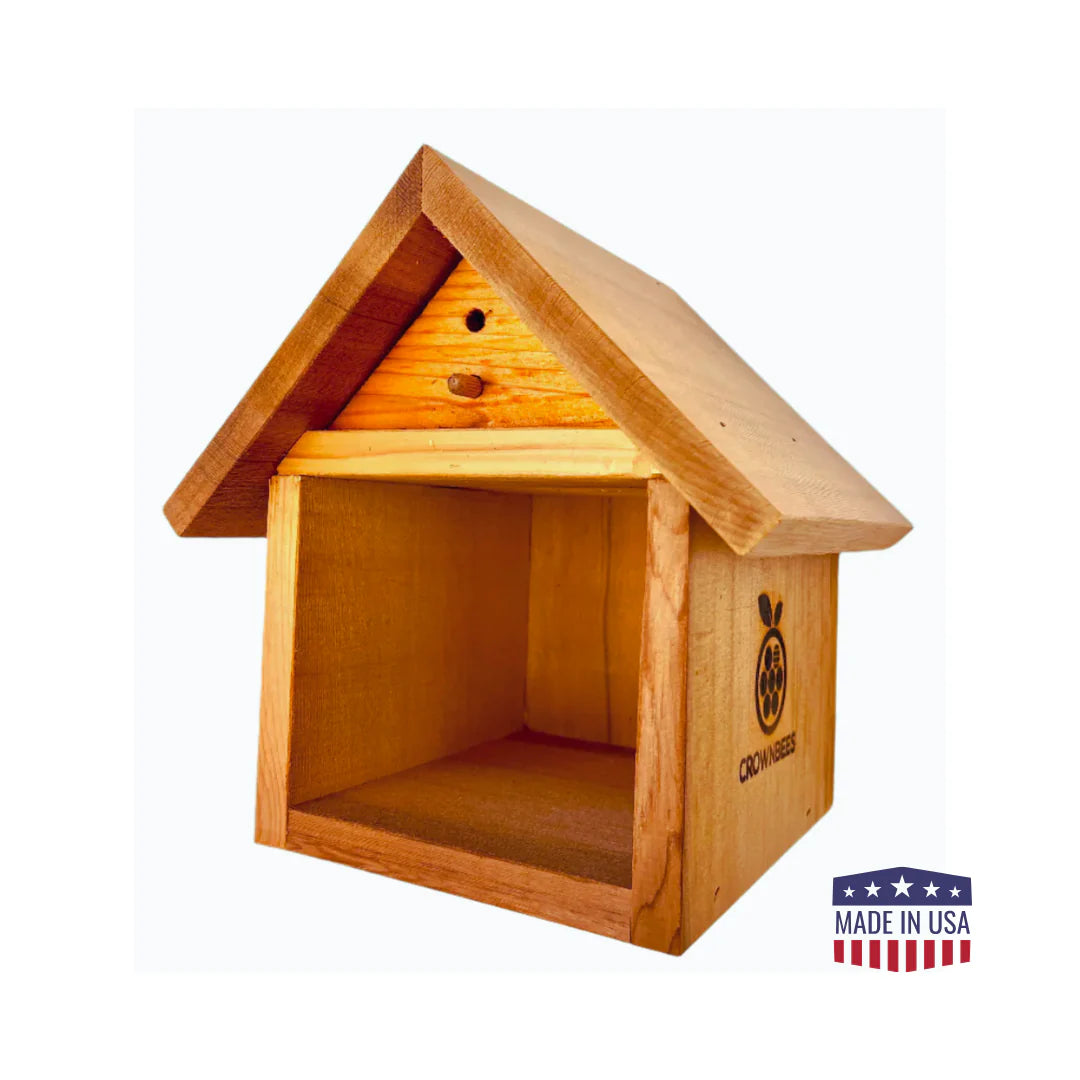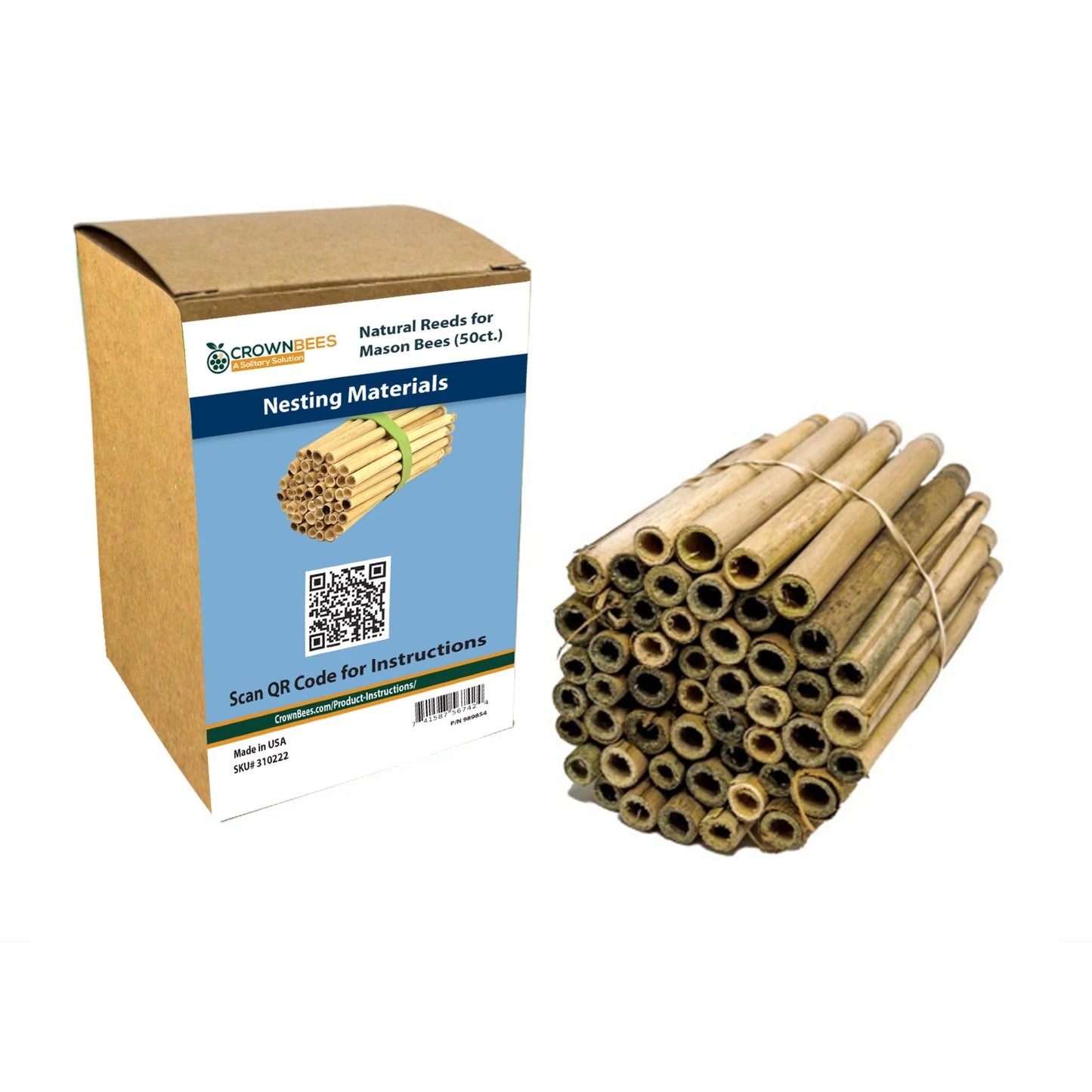Mason and Summer Leaf bees use visual cues to help orientate themselves to their nests.

After emerging from their cocoons, females take an orientation flight. They search for a suitable nesting site during this flight and learn the surrounding area to help them relocate their nests. After selecting a nesting hole, the female bee will fly in a zigzag pattern in front of the nest entrance, memorizing its exact location.
Bee houses with large numbers of nesting holes that all look the same make it difficult for the females to relocate their nests—sometimes, this results in females nesting elsewhere. To avoid confusing the bees, we offer reeds that naturally have slight size variations and char the front of our wood trays to give each hole a slightly unique look.
To make it even easier for the females to relocate their nests after foraging, we've created Bee Wayfinders! These "signposts" add additional visual hints to help females locate their nesting cavities quickly.
Bees base their color combinations on ultraviolet light, blue, and green, which is why they can't see the color red. They can, however, see reddish wavelengths, such as yellow and orange. Each Bee Wayfinder is a unique bold color that bees can easily see.
Instructions
If you are using cardboard tubes with inserts, insert the Wayfinders between tubes. Locate them randomly, leaving spaces between. Your bees will also appreciate some help locating there nests when using stacked or larger sized trays. The more nesting holes available for them to choose from, the more easily they can become confused.


